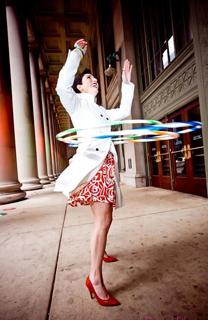Social Media— A Mechanism to Effectuate Real and Meaningful Change
Permanent link All Posts
The Chicago Tribune recently published an article titled, “Social Media a Godsend For Those with Rare Disease” which featured a Chicago area woman who retreated into cyberspace when diagnosed with a rare heart condition called SCAD— Spontaneous Coronary Artery Dissection. Using the mouse as her guide, within a few moments, she was able to find support, encouragement and relevant information about her disease.
Now more than ever, individuals with rare diseases are finding the critical and necessary information and support to better manage illness. When health care providers are unable to fulfill those needs, the web-based community is ready and willing steps in.
In December 2010, I was diagnosed with a rare type of blood cancer called Gray Zone Lymphoma, a disease that has only been officially recognized since 2008, and affects less than 300 people in the United States. As a result of the newness and rarity of this cancer, my doctors and team of specialists were unable to provide me with statistics that could provide further insight into my illness.
In this case, not only did the medical community have little information to offer about my disease, but the web-based community was unusually quiet. After many sleepless nights and hours spent scouring the internet, I was finally able to connect with four other “Gray Zoners” on Facebook.
The lack of research, statistics, and evidence-based practice related to my disease, led me to feel empowered to write my own story. Instead of becoming overwhelmed by the lack of viable information, I made the conscious decision to educate, inform, and raise awareness about this disease. Social media in essence was my soapbox.
Throughout treatment I used various social media platforms to open up about my hopes and dreams and everything in between. I discussed the hardships and triumphs while undergoing various procedures, scans, and 720 hours of chemotherapy. I discussed fertility issues, relationships, and the complexities surrounding re-emerging into the world after enduring a year of profound sickness and isolation.
Nothing was off limits. There was no topic I wasn’t willing to discuss or share. And through sharing came increased vulnerability and through increased vulnerability the world opened up.
Upon completing treatment in May of 2011, I was determined to give back and in a big way. On June 3, 2012, also known as National Cancer Survivors Day, “Twist Out Cancer— a support community with a twist on cancer” was officially launched.
Twist Out Cancer (TOC) leverages social media to help survivors and their loved ones combat the feelings of isolation, loneliness, and helplessness that often accompany cancer diagnoses and treatment. TOC provides a forum through which anyone affected by cancer can share thoughts, experiences, stories, and insights, allowing for the exchange of ideas, encouragement, and wisdom from one community member to another. Twist Out Cancer provides survivors and supporters with the necessary information and support that they may not be able to get through their health care providers. It meets the need that I recognized early on, and creates a community of shared experiences and hope.
This past week I have had the opportunity and privilege to participate in the ROI Summit in Jerusalem which brings together 150 young social innovators from around the world. These selected ambassadors have been given a unique set of tools to help enable them to turn their innovative ideas into meaningful change.
Throughout the summit, social media has been the primary focus and mechanism to create community, establish strategic networks, and turn a vision into reality. Over the last few days it has become apparent that while social media may be a tremendous resource for information and support, it also has the potential to create meaningful relationships characterized by sharing and reciprocity.
The power of social media is boundless. It not only has the ability to create psycho-social support for individuals with rare diseases and/or cancer, but it should be seen as the primary mechanism to repair the world.
While cancer may have been the catalyst for me to learn about and leverage social media, it is the ROI Community of change agents who are continuing to show me how our journeys may be different and unique but are inextricably linked and dependent upon each other. With social media as our means to connect— anything is possible.



.jpg)



